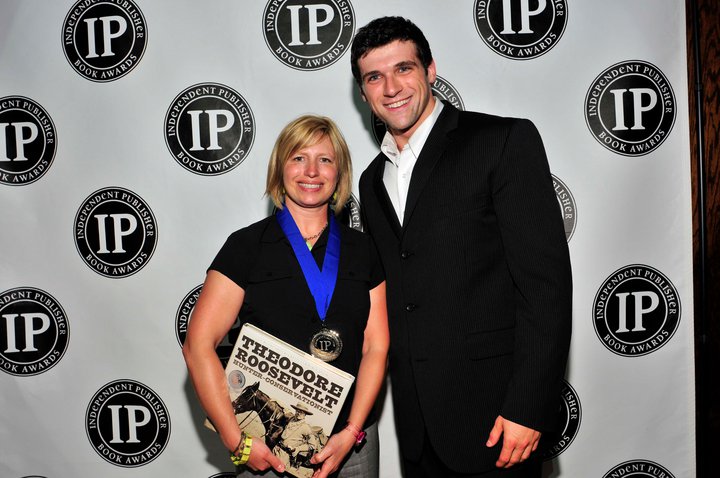
In today’s competitive book marketplace, your cover is often the deciding factor in whether a reader picks up your book or scrolls past it.
A strong cover doesn’t just capture attention; it builds trust, signals genre, and shows that you’ve taken the time to produce something worth reading. That’s especially critical when submitting your book to review outlets or award programs like the Independent Publisher Book Awards (IPPYs), where design plays a key role in first impressions.
If you’re preparing to publish—or re-publish—your book, here’s a practical toolkit to help guide you through the design process with clarity and confidence.
1. Understand Your Audience and Genre Expectations
Before you open a design program or hire a freelancer, take time to understand the visual language of your genre. Every genre has its own unspoken rules when it comes to cover design. Thriller novels tend to use bold fonts and dark imagery; cozy mysteries often feature illustrated elements and pastel color palettes; business books lean into clean, modern typography.
Look at bestselling books in your category (not to copy them), but to understand what readers are conditioned to recognize and trust. Your cover should feel familiar enough to fit in, but distinctive enough to stand out.
If your cover doesn’t align with your genre, readers may be confused or disinterested before they’ve even read your synopsis.
2. Focus on Typography That Works—Not Just Looks Good
Typography is often overlooked by first-time authors, but it’s one of the most important design choices you’ll make. The font you choose and how you lay it out communicate more than just the title; it sets the tone for your entire book.
To make the biggest impact, make sure your title and subtitle are legible in both full-size and thumbnail versions. This is critical for online sales, where most shoppers will only see a small image of your cover.
Also, avoid overly stylized fonts that are difficult to read. Stick with one or two complementary typefaces, and don’t crowd the cover with too much text. Your name, the title, and a short subtitle or tagline are usually all you need.
3. Work with a Professional—or Use High-Quality Tools Wisely
If your budget allows, hiring a professional cover designer is one of the best investments you can make. A good designer doesn’t just make something “look nice”—they understand visual hierarchy, audience psychology, and genre conventions.
If hiring a designer isn’t an option, there are plenty of tools available to help you create a high-quality cover on your own. Just be cautious: a poorly designed cover can hurt your credibility and limit your book’s reach, even if the content is excellent.
Professional design platforms and resources to consider:
Jenkins Group – The parent company of the Independent Publisher Book Awards, Jenkins Group has been helping authors publish professionally since 1988. Our experienced team offers custom cover design services tailored to independent authors and publishers.
99designs – Allows you to run design contests or hire directly.
Canva Pro / Adobe Express – Great for DIY authors who have an eye for layout.
BookBrush – Built specifically for authors, with templates for covers and promo graphics.
Whichever route you take, prioritize clarity, professionalism, and reader appeal over personal preference. A good cover isn’t about what you like; it’s about what your reader expects and responds to.
4. Design for Print and Digital from the Start
It’s important to consider how your cover will appear across formats such as print, eBook, and even audiobook. Each requires different specs, and if you’re publishing in multiple formats (which you should be), you’ll want a design that translates well across all of them.
For print books, you’ll need to factor in trim size, spine width (which depends on page count), and back cover content like your author bio, description, barcode, and logo (if applicable). For eBooks, the back cover isn’t visible, so the front cover does all the heavy lifting.
Also, make sure to consider how your cover will look as a thumbnail. On platforms like Amazon or Apple Books, your cover will be reduced to a small image. If your title is too small or your image is too cluttered, the impact will be lost.
5. Build Your Design Around a Strong Visual Hierarchy
Visual hierarchy refers to the arrangement of elements in a way that guides the viewer’s attention. A good book cover immediately communicates what’s most important: usually the title, followed by the subtitle or tagline, and then the author’s name.
Use scale, contrast, and spacing to create a natural flow for the eye. If everything is bold, nothing stands out. If your title blends into the background, readers will skip over it.
Also, think about the mood and tone your design conveys. The imagery, color palette, and font style should all work together to evoke the feeling of your book’s content, whether that’s suspense, joy, inspiration, or deep reflection.
6. Use the Right Supporting Tools to Polish Your Design
Whether you’re designing the cover yourself or working with a professional, there are tools available that can help you test, refine, and present your cover effectively.
Helpful tools for indie authors:
Placeit.net or DIYBookCovers.com – Generate realistic 3D mockups for marketing and social media.
Coolors.co – Build cohesive color palettes for your cover design.
Google Fonts / Adobe Fonts – Find high-quality, license-free fonts for commercial use.
Unsplash / Pexels / Shutterstock – Source high-resolution, royalty-free images if your design includes photography.
Make sure that all visual elements used in your design (including photos, fonts, and graphics) are properly licensed for commercial use.
7. Why Design Matters for Awards and Your Author Brand
A professional, well-designed cover attracts readers along with judges. Programs like the IPPY Awards look at the whole package: writing quality, message, design, and presentation. A great story with an amateur-looking cover may not get the attention it deserves.
Your cover is also the foundation of your author brand. It will appear on your website, in social media graphics, in media kits, and on retail platforms. A strong visual identity builds recognition and signals quality, both of which are critical for long-term success as an independent author.
Final Thought
Designing a book cover is part art, part strategy. It’s not just about what looks good—it’s about what works. By understanding your genre, prioritizing readability, and investing in the right tools or talent, you can create a cover that captures attention, builds credibility, and opens doors for your book.
Your cover is the promise you make to your readers. Make sure it’s one you’re proud to keep.
Ready to Showcase Your Work?
If you’ve put the work into crafting a compelling story, refining your prose, and presenting it all in a professionally designed package, it’s time to share your achievement with the world. The Independent Publisher Book Awards (IPPYs) honor excellence in independent publishing, and that includes the details that make a book stand out, from editorial quality to cover design and overall presentation.
Thousands of authors have earned recognition through the IPPY Awards for producing books that are not only well-written but also beautifully produced.
Think your book has what it takes? Enter your title today and join a community of indie authors and publishers who are raising the bar—one beautifully designed book at a time.




